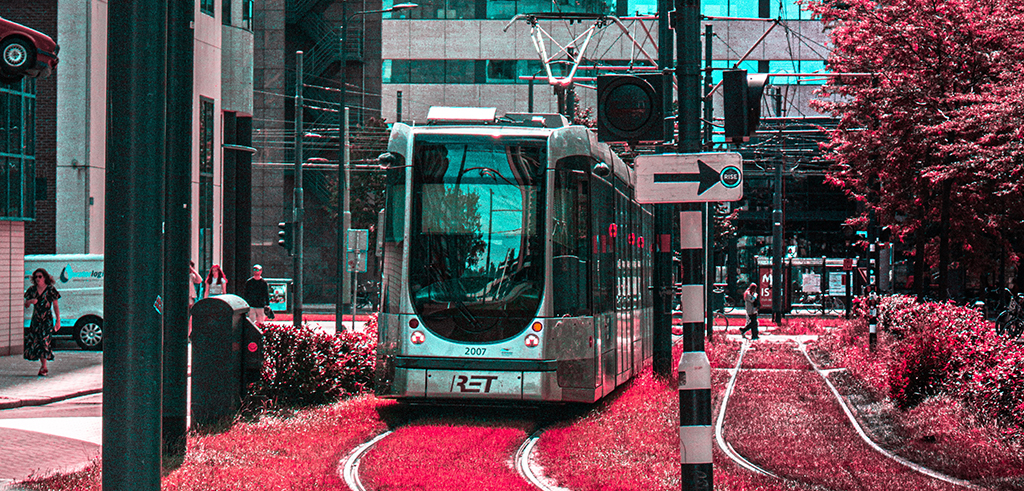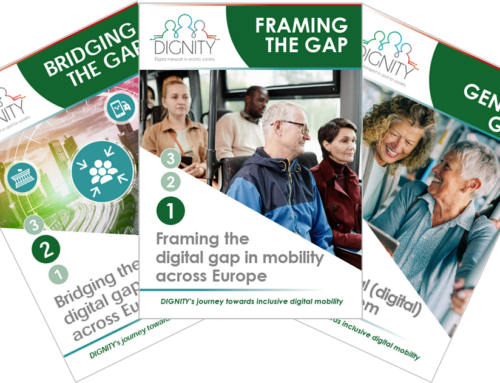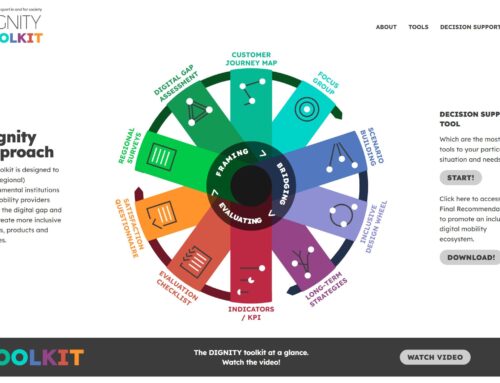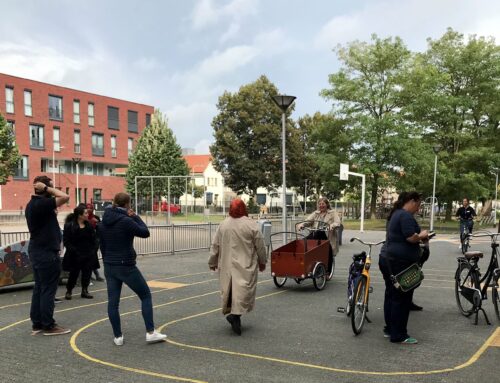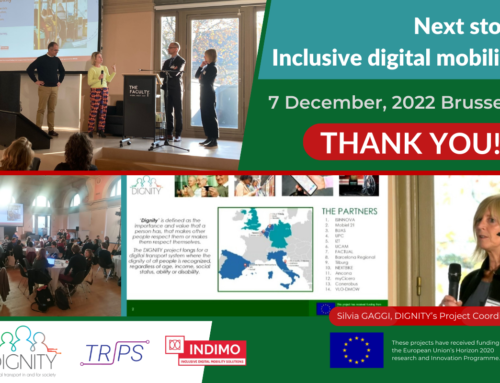“When I was autonomous, it made little difference to me whether I travelled by bus or by tram. Now I avoid taking the bus because I don’t dare do it alone”.
You might remember Linda* from Tilburg, the Netherlands, recently telling us about her experiences getting around town in a wheelchair. There, she told us she prefers to stick to the routes she knows, for fear of bumpy pavements, bends in the road, or potholes. And her uncertainty is based on lived experiences – in the past, she has been thrown out of her wheelchair due to the wheels getting caught in an uneven pavement. Read that story here.
DIGNITY has been conducting interviews with citizens across its four pilot cities – Tilburg, Flanders, Barcelona and Ancona – to gather important information on the challenges being faced by vulnerable-to-exclusion groups in utilising mobility services. 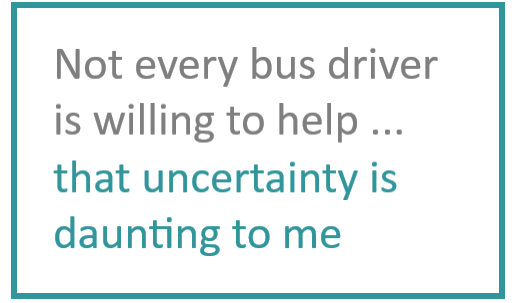
Now, Linda talks to us about the differences in travelling by bus or by tram in a wheelchair. In addition to sticking to the ways through town that she already knows, Linda takes the tram instead of the bus where possible.
“It has everything to do with my own mobility. Not every bus driver is willing to help, or drives close enough to the pavement so that the plank can be neatly arranged. That uncertainty is daunting to me”.
Getting a wheelchair onto a bus does require help. Often, this means the driver getting out of the vehicle to assemble a ramp that runs from the pavement to the bus.
“If things don’t go well, the wheelchair can sometimes go over the side of the plank”.
The anxiety that this causes Linda is a great deterrent to her travelling by bus without a trusted companion.
“I do travel with my brother and that reassures me a lot – knowing that there is someone there who will help me”.
Linda is fairly tech-savvy, and there is another thing that helps her – a travel app that shows which bus stops are accessible for wheelchair users. She also uses an app for a taxi service, but finds that one hard to use, so she usually calls them. These are the points that DIGNITY will look at more closely with service providers.
When it comes to travelling by tram, things can be a lot more straightforward – if you live in a town that has them.
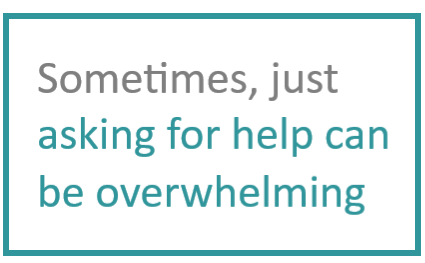 “I travel by tram in Rotterdam because there is less uncertainty. The tram can only run in one direction, and there is almost no space between the pavement and the entrance”.
“I travel by tram in Rotterdam because there is less uncertainty. The tram can only run in one direction, and there is almost no space between the pavement and the entrance”.
Sometimes, even just the concept of asking for help can be an overwhelming concept. If things do not go to plan, the person could feel embarrassed.
“Maybe it’s because of my fear of the unknown”.
What are the next steps for DIGNITY? We will use this interview, and the many others conducted by DIGNITY, as the basis for understanding the practical solutions that could be implemented to help people like Linda. This will include holding workshops using the inclusive design wheel provided by the University of Cambridge, and scenario-building workshops with mobility providers.
We would like to hear about your experiences travelling on public transport using digital services. If you would like to share your story, please email Madeleine by clicking here.

